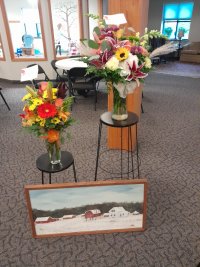A fried had asked me to photograph and old painting for sentimental reasons. Her mom passed away and more than one of the children desire to hang it in their own home.
I’m an amateur and would like to do a good job, but this doesn’t need to be museum quality work. I have an R6 and am wondering which lens/focal length would give me the least distortion.
EF Tamron 15-30 f/2.8
RF 24-70 f/2.8
RF 50 1.8
RF 70-200 f/2.8
Also, since my sensor is only 20mp I’m considering shooting as a pano to stitch in LR to gain resolution. I don’t know the exact size but have attached a photo below for reference.
Im also looking for tips on setup. I have two small LED light panels with color temp control, or might just do it outside on a cloudy day.

I’m an amateur and would like to do a good job, but this doesn’t need to be museum quality work. I have an R6 and am wondering which lens/focal length would give me the least distortion.
EF Tamron 15-30 f/2.8
RF 24-70 f/2.8
RF 50 1.8
RF 70-200 f/2.8
Also, since my sensor is only 20mp I’m considering shooting as a pano to stitch in LR to gain resolution. I don’t know the exact size but have attached a photo below for reference.
Im also looking for tips on setup. I have two small LED light panels with color temp control, or might just do it outside on a cloudy day.

